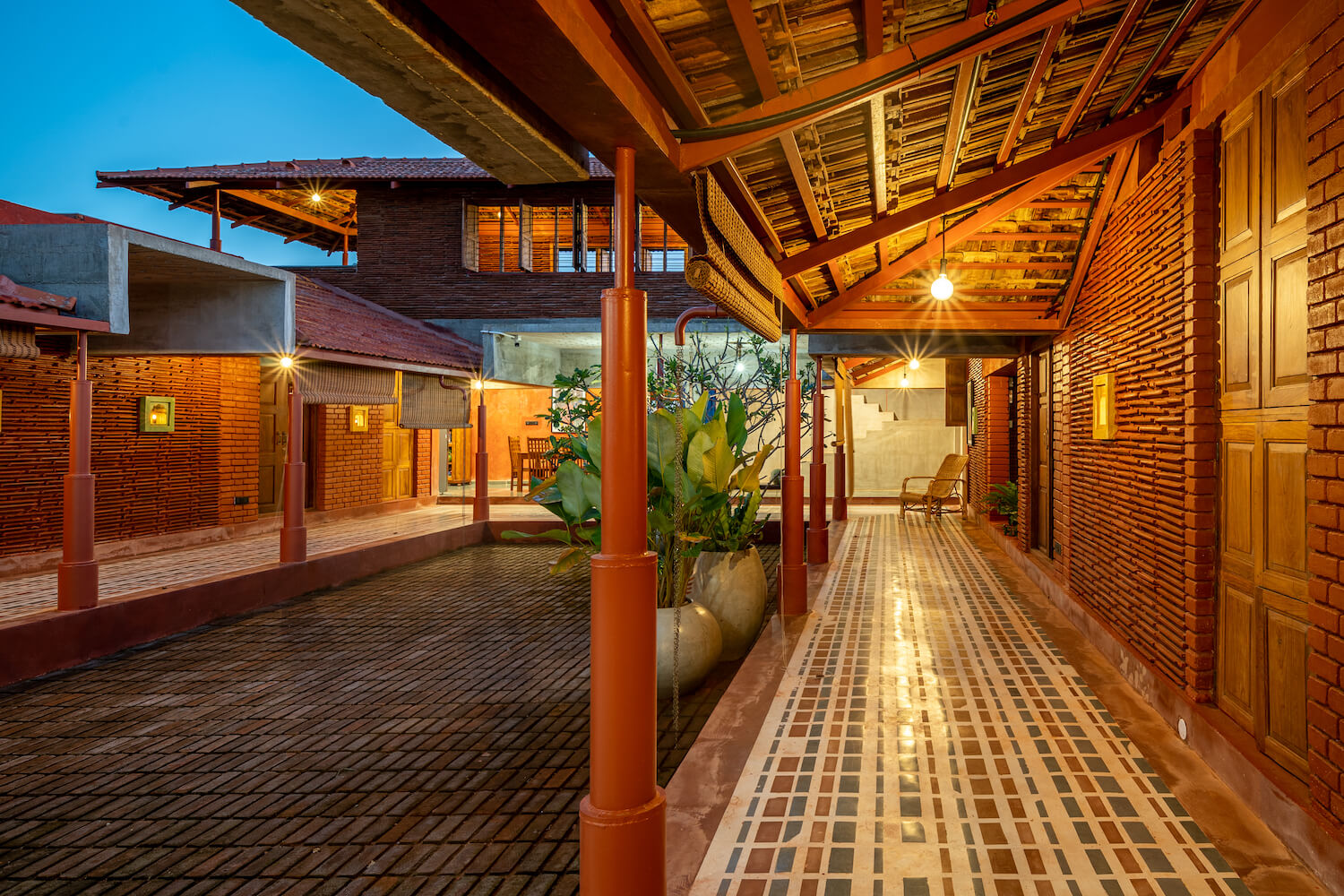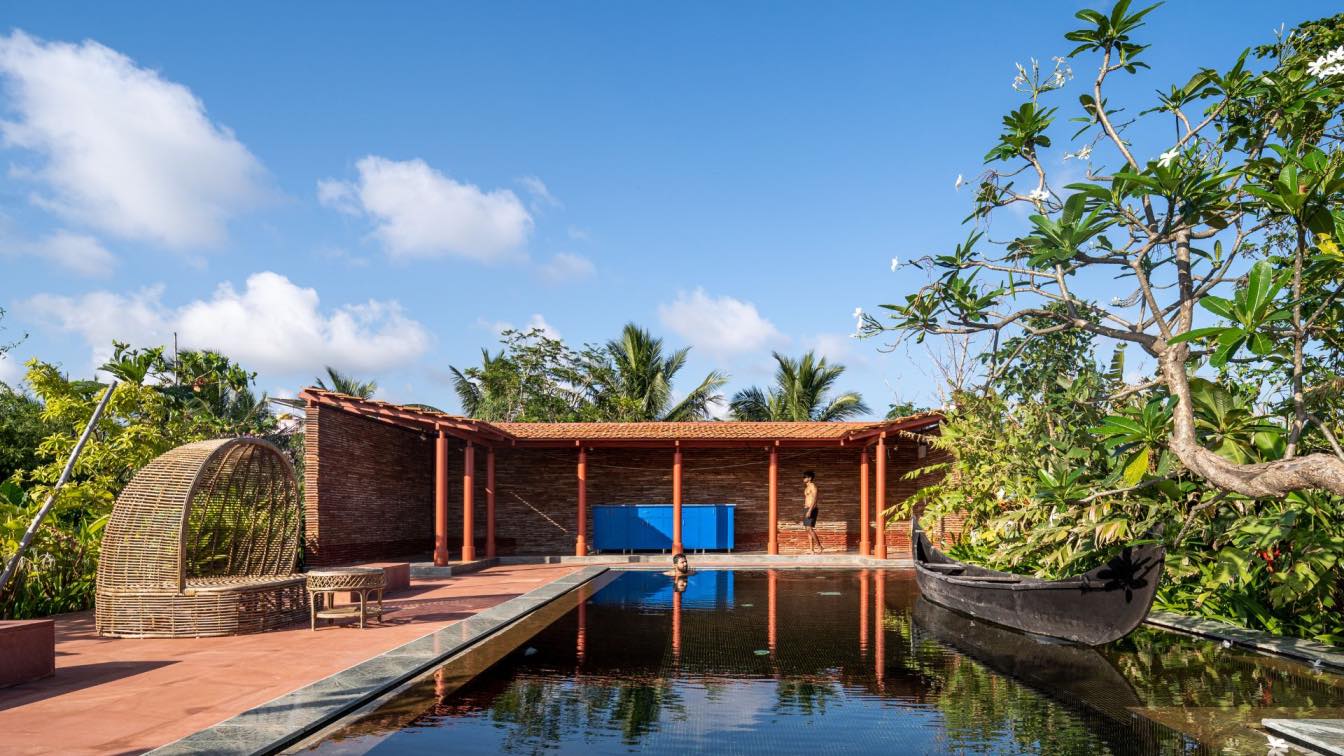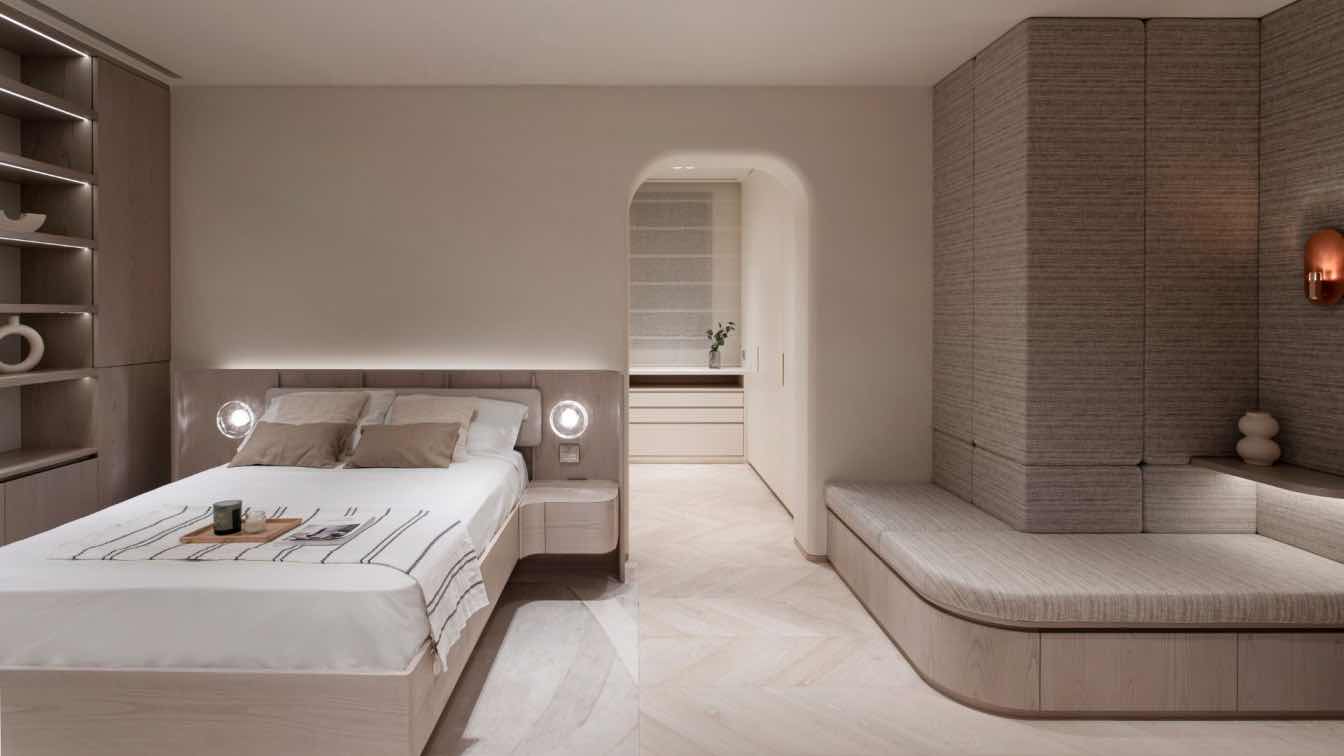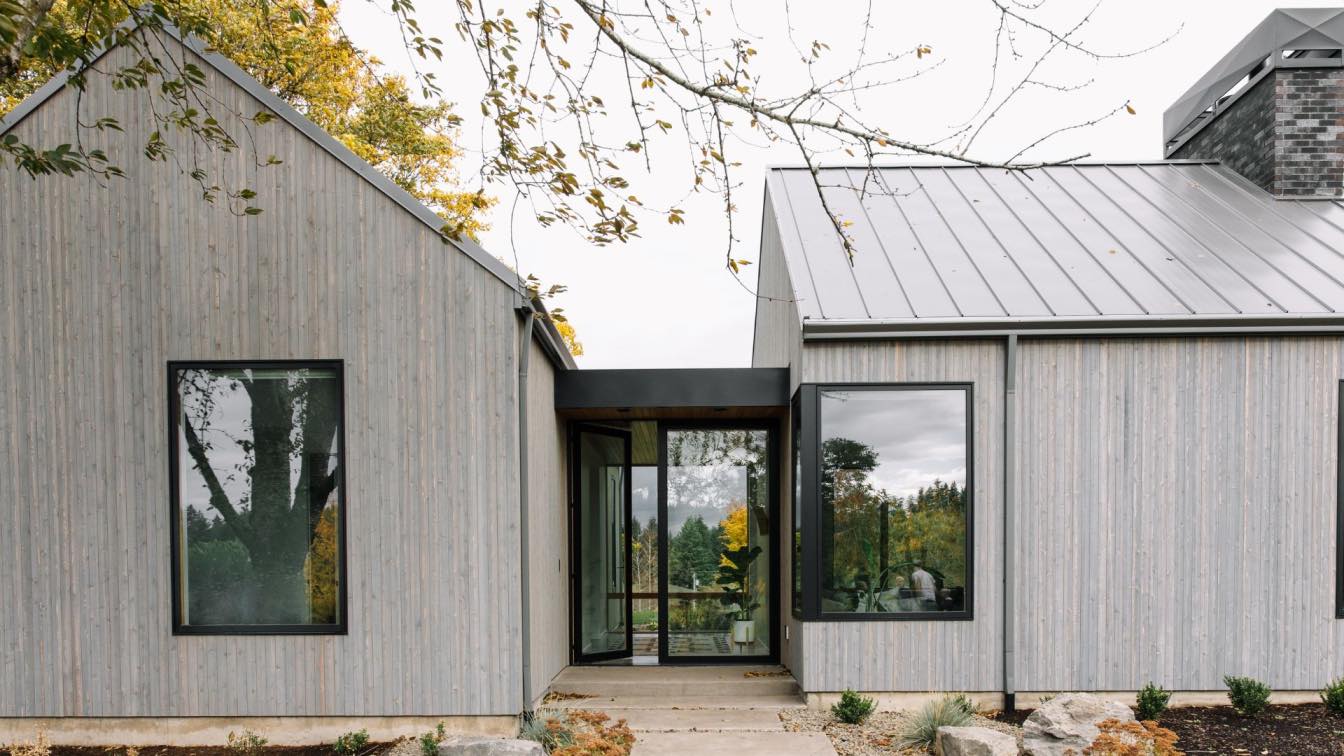RAIN Studio of Design: Karai was conceptualised to provide an experience of living in the palms of mother earth. Built hands-on this weekend home located in the serene vicinity of coastal Kuvathur, about eighty kilometres from Chennai, was conceived as a simple experiment with techniques that felt native yet contemporary to the region. Sequestered from civilization, the lashing of the waves and the persistent stillness prevalent on site was an inspiration dictating the design ideal from the early stages. Therefore the built layer intentionally allows exposure to the elements, to achieve an innate presence in the surroundings.
Set within close proximity to the sea, the living unit was envisaged to remain hidden within dense verdure and framed by reflection pools. A contemporary take on the traditional ‘nalukettu’ house form, the courtyard breathes life into the home, apart from playing a passive role in adjusting microclimate. The clients’ programmatic requirements included four rooms with attached baths with a guaranteed view of the sea. The rooms and other living spaces such as the dining and kitchen are organised around the linear brick-laid court. The lounge on the upper level sets a stage to gaze at the sea and the horizon beyond. The ‘mutram’ or the court with the corridor hugging its perimeter acts as a multifunctional space, to rest, to pause, to look at the sky above.
Four-directional sloping roofs composed of the standard interlocking Mangalore tiles cover the rooms extending onto corridors. The sloped ceiling is interspersed by inverted U-shaped flat roof junctions, which are embedded with glass strips forming kaleidoscopic patterns of sunlight. The dining and ante space leading to the staircase allows the breeze to flow through to the upper level and are housed within a filler slab roof with earthen pots as infill enabling passive cooling. The painted Mild Steel columns support the roof connecting to beams that double up as gutters collecting rainwater. Pre-used Mangalore tiles in arbitrary permutations were placed to form the rugged walls. Coloured oxides namely red, blue, green and yellow mark a different tone for each room, which are connected together by the central courtyard, and appear to be identical to a ludo board game in the plan.
A hand-in-hand process involving the design team and the construction team led to innovation on many fronts. One of the design intentions was to explore regional traditional techniques and reuse of reclaimed construction materials in unconventional ways. A Tetris of old window shutters that form the doors and flooring composed of a mosaic of discarded stone pieces are a testament to this. Consequently, on-site training of local labour in the usage of long-established techniques such as mud mortar, oxide finishes and Mangalore tile roofing was a mutually beneficial process for the studio as well.
A keen eye was provided to the detailing to showcase the materiality and textures in their raw form. Tessellations of pre-used Mangalore tiles sandwiched together by mud mortar form a majority of the walls, creating earthy volumes that contrast the green lush backdrop. The CSEB (Compressed stabilised earth blocks) procured from Auroville were made to match the height and proportions of the Mangalore tiles. In an attempt to achieve sprinkles of the summer sun into the spaces, cut toughened glass pieces have been used as inserts in portions of the roof.

The tactility of the materials used comes through in the larger sense from the many smaller elements that have been carefully manicured from reclaimed objects. Close to sixty-two window shutters from demolished houses have been repurposed and used as a module in varying combinations to create new doors and windows. Twenty such smaller small wooden shutters make the leading entrance door, each of which is dotted by brass knobs from household brassware. The threshold on the rear is marked by a simplified imitation of the traditional wooden carved door, seen in the typical South-Indian house, but with a dash of blue.
The bath areas are illuminated by the natural sun that flows into the space brightening the hues of the pigmented oxide surfaces. The pre-chromed brass faucets have been installed without the factory castored coating, the absence of which allows oxidation and the natural formation of patina. A kitchen utility aluminium vessel replaces the basin which sits on a coloured oxide counter, the colours of which vary for each room. The exposed GI (Galvanised Iron) pipes in the shower area and the loose Cudappah rubble flooring further heighten the bucolic feel.

Fixtures have been custom-detailed to complement and contrast the space. Items of significance in the South-Indian domiciliary such as the brass ‘kuthu vilakku’ (traditional oil lamp) and the ‘kudam’ (pot used to transport and hold water)have been transformed playfully to fulfil the same purpose it was originally meant for i.e. the former as a light fixture and the latter as a spout filling water into the lotus pond. In theory, a tapered intricately carved column that supports the roof of the mutram, is represented as an abstract Mild Steel version staggered in sections. The ‘vilakku maadam’ or the mandatory placeholder for lamps, is playfully cast in coloured concrete and encapsulated in the tiled walls, creating niches of delight.
Imperfections in the finishes much like that observed in vernacular architecture showcase the traces of the human hands at work. Multiple local stones were procured to create a maze of patterns on the floor. Ikhat handloom-inspired rectangular blocks of varying sizes blanket the corridor. Smaller nodes on the external corridor are marked by pixelated ‘kolam’ patterns, i.e. the traditional rangoli rooted in southern India. The rest rooms are characterised by pigmented oxide inlaid with Kota. Essentially a combination of Dholpur and Kota stone inserted within white terrazzo were chosen to make the flooring appear light and balance the visual mass of the walls.

Lining the perimeter on the North-East is a lotus pond inhabited by native fish, designed to add aesthetic character to the predictable corridor. The exterior swimming pool is eclipsed by the dense landscape strategically located to serve as the perfect vantage point to view the home. An antique fishing boat was procured from a fisherman in Kerala to pose as a sculpture in the pool. The landscape was intended to soften the heavy earthy structure. Dense and lush, a variety of thick shrubbery and flowering plants were obtained from neighbouring areas, to ensure they thrive in the coastal environs. While a few handpicked species, like the Champa tree that sit majestically in the court, were transplanted from nurseries at Rajahmundry.
Humans are of nature, and yet contemporary trends in architecture focus on creating structures that are alienated. Karai is an honest endeavour to recreate the memory of the family home set in the countryside; to trigger one’s senses through the tangibility of the materials. Spatially it tries to bridge the growing disconnect between man and the environment. The site is considered a sanctum has been treated with minimal intervention, and the experience of the sea has been celebrated.
































